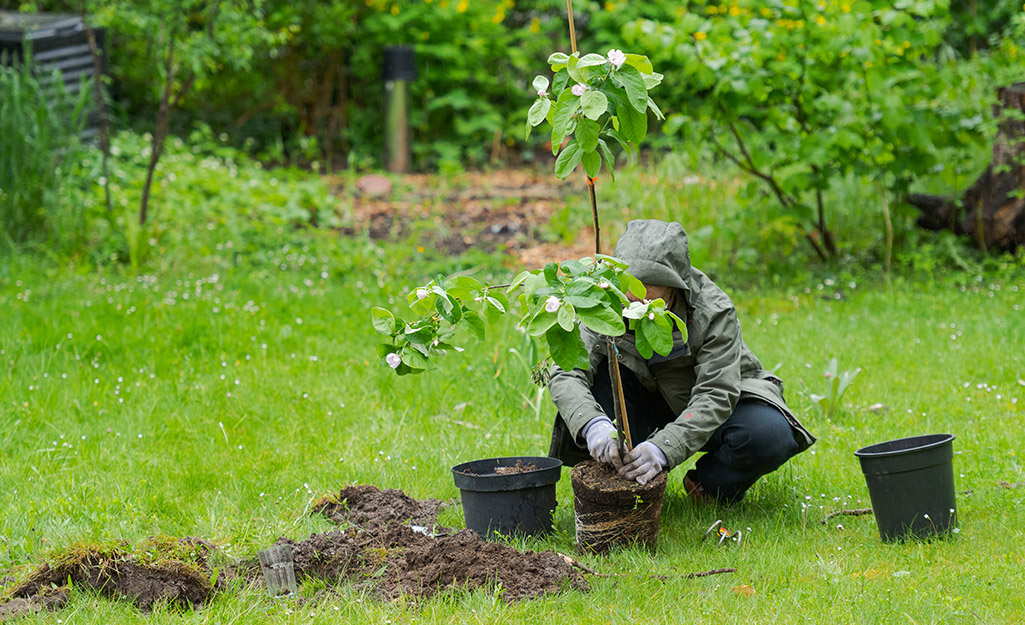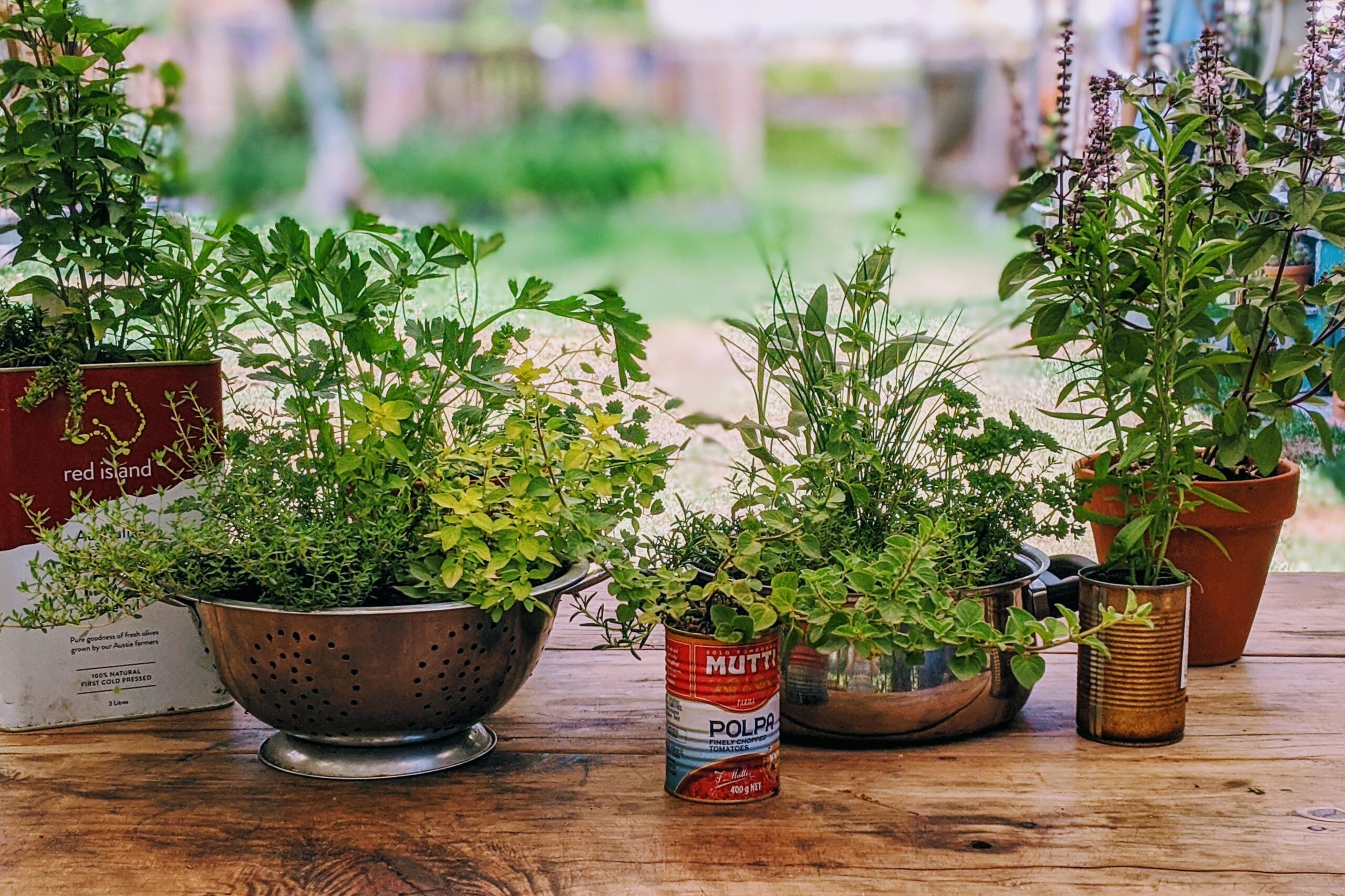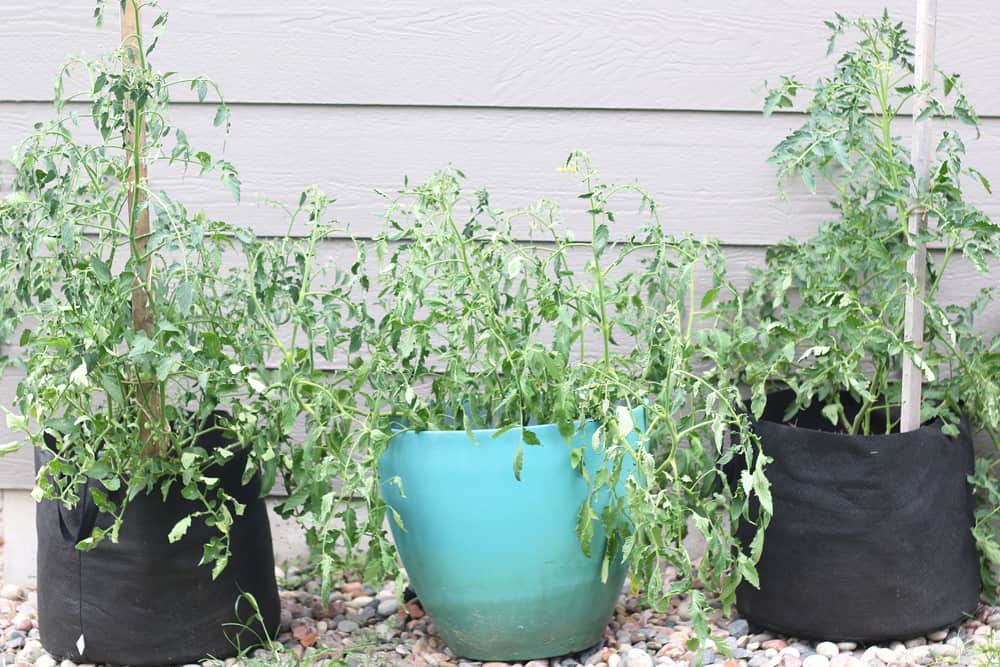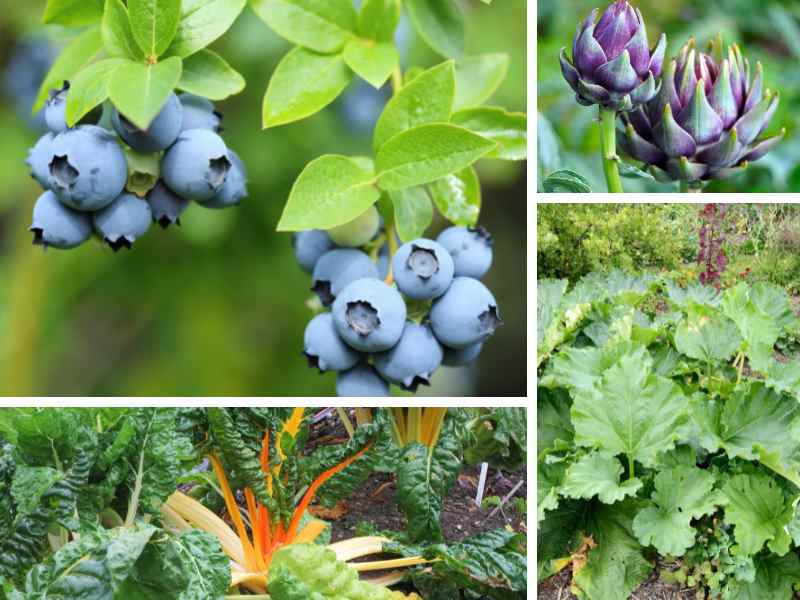
Embarking on Your Fruit Tree Journey: A Comprehensive Guide
Imagine stepping into your backyard and plucking a sun-ripened apple, a juicy peach, or a handful of sweet cherries straight from your own tree. This dream can become a reality with a little planning, effort, and knowledge. Planting and caring for fruit trees can be an incredibly rewarding experience, providing you with fresh, delicious fruit for years to come. This comprehensive guide will walk you through every step of the process, from choosing the right tree to harvesting your bountiful crop.
Why Grow Your Own Fruit? The Sweet Rewards
Beyond the obvious benefit of having access to fresh, homegrown fruit, there are many compelling reasons to plant fruit trees. Consider these advantages:
- Superior Flavor: Fruit picked at its peak ripeness simply tastes better than anything you can buy in a store. The difference is undeniable.
- Health Benefits: Homegrown fruit is packed with vitamins, minerals, and antioxidants, contributing to a healthier lifestyle. You control what goes into growing your fruit, avoiding harmful pesticides and chemicals.
- Cost Savings: Over time, a fruit tree can save you money on your grocery bill. Think of all those apples, peaches, and pears you won’t have to buy!
- Environmental Impact: Growing your own food reduces your carbon footprint by minimizing transportation and packaging.
- Aesthetic Appeal: Fruit trees add beauty and charm to your landscape, providing shade, blossoms, and seasonal color.
- Personal Satisfaction: There’s a unique sense of accomplishment that comes with nurturing a tree and harvesting its fruit. It’s a connection to nature and a celebration of the seasons.
Choosing the Right Fruit Tree: A Foundation for Success
Selecting the right fruit tree is crucial for long-term success. Consider these factors carefully before making your purchase:
Climate Considerations: Know Your Growing Zone
The first and most important step is to determine your USDA plant hardiness zone. This zone indicates the average minimum winter temperature in your area, which will dictate which fruit trees can survive your winters. You can easily find your zone online by searching for “USDA plant hardiness zone map.” Choose varieties that are known to thrive in your zone. For example, some apple varieties are more cold-hardy than others.
Space Availability: Dwarf, Semi-Dwarf, or Standard?
Consider the amount of space you have available. Fruit trees come in various sizes, including:
- Standard: These are the largest trees, reaching heights of 20-30 feet. They require ample space and are best suited for large properties.
- Semi-Dwarf: These trees are smaller than standard trees, typically reaching 12-18 feet in height. They are a good compromise for those with moderate space.
- Dwarf: These are the smallest fruit trees, growing to only 6-10 feet tall. They are ideal for small gardens, patios, or even containers.
Dwarf and semi-dwarf trees are often grafted onto rootstocks that control their size. This allows you to grow fruit trees in smaller spaces without sacrificing fruit production.
Pollination Requirements: Ensuring a Fruitful Harvest
Many fruit trees require cross-pollination to produce fruit. This means that you need to plant two different varieties of the same fruit that bloom at the same time. The bees will then transfer pollen between the trees, resulting in fruit set. Some fruit trees are self-pollinating, meaning they can produce fruit with their own pollen. However, even self-pollinating trees often benefit from cross-pollination, resulting in larger and more abundant crops.
Research the pollination requirements of the fruit tree you are considering. If cross-pollination is required, choose two compatible varieties. Local nurseries can provide valuable advice on which varieties pollinate each other effectively.
Fruit Tree Varieties: A World of Flavors
The world of fruit tree varieties is vast and diverse. Each fruit has countless cultivars, each with its own unique flavor, texture, and ripening time. Consider your personal preferences when choosing a variety. Do you prefer sweet or tart apples? Do you like clingstone or freestone peaches? Research different varieties and choose those that appeal to your taste buds.
Also, consider the ripening time. Planting varieties that ripen at different times of the season will extend your harvest and provide you with fresh fruit for a longer period. For example, you could plant an early-season apple variety, a mid-season variety, and a late-season variety.
Bare-Root vs. Container-Grown Trees: Weighing the Options
Fruit trees are typically sold in two forms: bare-root and container-grown.
- Bare-Root Trees: These trees are sold without soil around their roots. They are typically less expensive than container-grown trees and are best planted in early spring before they leaf out. Bare-root trees require careful handling to prevent the roots from drying out.
- Container-Grown Trees: These trees are grown in pots and can be planted at any time during the growing season. They are more expensive than bare-root trees but are easier to handle and establish.
Both bare-root and container-grown trees can be successfully planted. Choose the option that best suits your needs and budget.
Planting Your Fruit Tree: Setting the Stage for Growth
Proper planting is essential for the health and longevity of your fruit tree. Follow these steps carefully:
Choosing the Right Location: Sunlight and Soil
Fruit trees need at least 6-8 hours of direct sunlight per day to produce fruit. Choose a location that receives plenty of sunshine throughout the growing season. Avoid planting trees in shady areas or near large trees that will compete for sunlight.
Soil is another critical factor. Fruit trees prefer well-drained soil that is rich in organic matter. Avoid planting trees in heavy clay soil or areas that are prone to waterlogging. If your soil is poor, amend it with compost or other organic matter before planting.
Preparing the Planting Hole: A Solid Foundation
Dig a hole that is twice as wide as the root ball and just as deep. This will allow the roots to spread easily and establish themselves in the surrounding soil. If you are planting a bare-root tree, create a small mound of soil in the center of the hole to support the roots.
Planting the Tree: Nurturing New Beginnings
Carefully remove the tree from its container or packaging. Gently loosen the roots to encourage them to spread outwards. Place the tree in the hole, making sure that the top of the root ball is level with the surrounding soil. Backfill the hole with soil, gently tamping it down to remove air pockets.
For bare-root trees, spread the roots evenly over the mound of soil in the center of the hole. Backfill the hole with soil, making sure that the graft union (the swollen area at the base of the trunk) is 2-3 inches above the soil line.
Watering and Mulching: Essential First Steps
Water the newly planted tree thoroughly to settle the soil and provide moisture to the roots. Apply a layer of mulch around the base of the tree to help retain moisture, suppress weeds, and regulate soil temperature. Use organic mulch such as wood chips, straw, or shredded leaves. Keep the mulch a few inches away from the trunk to prevent rot.
Staking (If Necessary): Providing Support
If your tree is young or has a weak trunk, you may need to stake it for support. Drive two stakes into the ground on either side of the tree and tie the trunk to the stakes with soft twine or tree ties. Be sure to loosen the ties as the tree grows to avoid girdling the trunk.
Caring for Your Fruit Tree: A Year-Round Commitment
Once your fruit tree is planted, it requires ongoing care to thrive and produce fruit. This includes watering, fertilizing, pruning, and pest control.
Watering: Meeting the Tree’s Needs
Water your fruit tree regularly, especially during dry periods. Young trees need more frequent watering than established trees. Water deeply and thoroughly, allowing the water to soak into the soil. Avoid watering shallowly, as this can encourage shallow root growth.
The amount of water your tree needs will depend on the climate, soil type, and tree size. As a general rule, water when the top inch of soil feels dry to the touch. During hot, dry weather, you may need to water daily.
Fertilizing: Nourishing Growth and Fruit Production
Fruit trees need regular fertilization to provide them with the nutrients they need to grow and produce fruit. Use a balanced fertilizer that is specifically formulated for fruit trees. Apply the fertilizer in early spring, before the tree begins to leaf out.
Follow the instructions on the fertilizer label carefully. Avoid over-fertilizing, as this can damage the tree. You can also amend the soil with compost or other organic matter to provide a slow-release source of nutrients.
Pruning: Shaping for Health and Productivity
Pruning is an essential part of fruit tree care. It helps to shape the tree, remove dead or diseased branches, and improve air circulation and sunlight penetration. Pruning also encourages fruit production.
The best time to prune fruit trees is in late winter or early spring, before the tree begins to grow. Use sharp, clean pruning shears or a pruning saw. Make clean cuts at a 45-degree angle, just above a bud or branch.
There are several different pruning techniques, depending on the type of fruit tree and your desired shape. Research the specific pruning requirements of your fruit tree variety.
Pest and Disease Control: Protecting Your Investment
Fruit trees are susceptible to various pests and diseases. Monitor your trees regularly for signs of infestation or disease. Common pests include aphids, mites, and codling moths. Common diseases include apple scab, powdery mildew, and brown rot.
There are several ways to control pests and diseases, including:
- Cultural Controls: These include practices such as pruning, sanitation, and proper watering and fertilization.
- Biological Controls: These involve using beneficial insects or microorganisms to control pests.
- Chemical Controls: These involve using pesticides or fungicides to control pests and diseases. Use chemical controls as a last resort, and always follow the instructions on the label carefully.
Preventative measures are often the most effective way to control pests and diseases. These include choosing disease-resistant varieties, maintaining good air circulation, and removing fallen leaves and fruit from around the tree.
Thinning Fruit: Encouraging Larger, Better Fruit
Thinning fruit is the process of removing some of the developing fruit from the tree. This may seem counterintuitive, but it actually results in larger, better-quality fruit. When a tree is overloaded with fruit, the fruit tends to be smaller and less flavorful. Thinning also helps to prevent branches from breaking under the weight of the fruit.
Thin fruit in early summer, after the fruit has set. Remove any damaged or diseased fruit, as well as any fruit that is growing too close together. Leave about 4-6 inches between each fruit.
Harvesting Your Fruit: The Fruits of Your Labor
The moment you’ve been waiting for! Knowing when to harvest your fruit is key to enjoying its peak flavor and texture. Each type of fruit has its own indicators of ripeness. For example, apples are typically ready to harvest when they easily twist off the branch. Peaches are ripe when they are slightly soft to the touch and have a fragrant aroma. Cherries are ripe when they are deep red and plump.
Gently harvest the fruit to avoid bruising it. Store the fruit in a cool, dry place. Some fruits, such as apples and pears, can be stored for several months if properly handled.
Troubleshooting Common Problems: Addressing Challenges
Even with the best care, fruit trees can sometimes encounter problems. Here are some common issues and how to address them:
- Lack of Fruit Production: This can be caused by a variety of factors, including poor pollination, insufficient sunlight, nutrient deficiencies, or improper pruning. Review your planting and care practices to identify the cause.
- Pest Infestations: Monitor your trees regularly for pests and take appropriate control measures.
- Disease Problems: Identify the disease and treat it with an appropriate fungicide.
- Branch Breakage: This can be caused by heavy fruit loads or strong winds. Thin the fruit and provide support for weak branches.
- Sunscald: This occurs when the bark of the tree is exposed to intense sunlight. Protect the trunk with tree wrap or paint it with white latex paint.
Extending Your Orchard: Expanding the Bounty
Once you’ve successfully grown one fruit tree, you may be tempted to expand your orchard. Consider adding different varieties of the same fruit, or try growing other types of fruit trees, such as pears, plums, or cherries. With a little planning and effort, you can create a thriving orchard that provides you with fresh, delicious fruit for years to come.
Conclusion: A Rewarding Journey
Planting and caring for fruit trees is a rewarding journey that connects you to nature and provides you with fresh, delicious fruit. With a little knowledge and effort, you can create a thriving orchard that enhances your landscape and nourishes your body and soul. So, get out there, choose your trees, and start planting! The sweet rewards await.



